Germany’s Stolpersteine Posted by Constanze on Jul 8, 2020 in Culture
Guten Tag! Today we’re travelling around Germany again, this time to look at Stolpersteine. In fact, the Stolpersteine will take us out of Germany, too, and all around Europe. Read on to find out more.
In the early ‘90s, a German artist named Gunter Demnig came up with the idea of Stolpersteine, commemorative brass plaques that remembered the victims of national socialism. Originally intended to be a one-off project, the Stolpersteine were so well-received that Demnig continued to install his plaques all around Germany and, eventually, all around Europe. They can now be found in several European countries, including Österreich (Austria), die Schweiz (Switzerland), Italien (Italy), die Slowakei (Slovakia), Tschechien (Czech Republic), Ungarn (Hungary), Finnland (Finland), and Frankreich (France).
So what’s special about the Stolpersteine? They are always installed on the pavement (der Gehweg) outside the individual’s last place of residence or work before they fell victim to the Nazis, and there is always one plaque per person (note: they are never placed in front of residences or workplaces that a person was forced to live or work in, but outside a place where they were happy). As of December 2019, a total of 75,000 Stolpersteine have been installed around Europe. That means, wherever you go in Germany (or most other countries in Europe), there is the chance you will stumble upon a Stolperstein at some point on your trip. You may have even stumbled upon one already, without realising it!
That’s what the word der Stolperstein means – ‘the stumbling stone’. It is made of the verb stolpern – to stumble, and the noun der Stein – stone. Gunter Demnig chose this name because he liked its double meaning; the idea that you will stumble upon these plaques unexpectedly, but also that it will make you stumble mentally. He wanted the plaques to make people stop and think, so the past is never forgotten, and the individuals named on the plaques are always remembered.
The inscription on each Stolperstein begins, ‘Hier wohnte’ (‘Here lived’) or ‘Hier arbeitete’ (‘Here worked’), followed by the person’s name. It then usually goes on to list their year of birth using the abbreviation JG (‘Jahrgang’), and what happened to them. Here is a real inscription on a Stolperstein:
Hier arbeitete
Meta Kroner
JG. 1905
Deportiert 1943
Ermordet in AuschwitzHere worked
Meta Kroner
DOB 1905
Deported in 1943
Murdered in Auschwitz
Here are some more:
In places where there were too many victims to create a Stolperstein for each of them, Demnig installs what he calls Stolperschwellen – ‘stumbling thresholds’. These are longer than the Stolpersteine and contain several names.
Demnig’s project is the largest, non-localised memorial in Europe. As well as remembering the victims, he hopes that the Stolpersteine and Stolperschwellen will encourage younger people to learn more about their neighbourhoods, the people who lived in them, and the atrocities they faced, so that this is never forgotten.

Build vocabulary, practice pronunciation, and more with Transparent Language Online. Available anytime, anywhere, on any device.



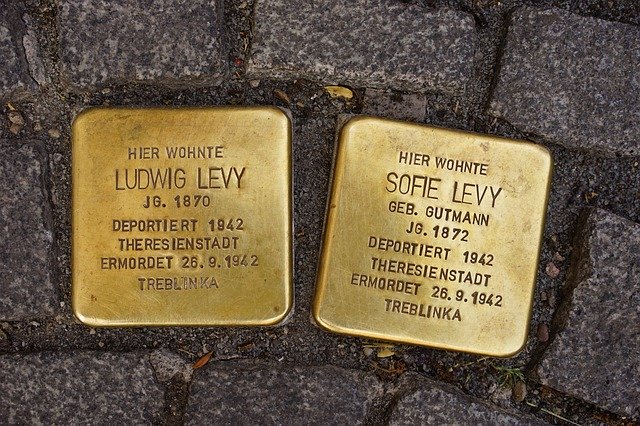
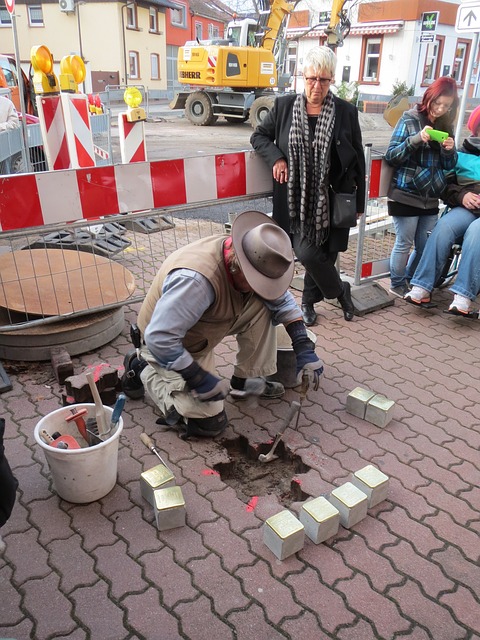
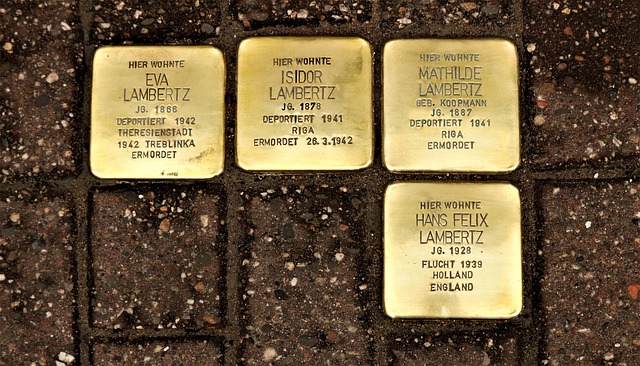
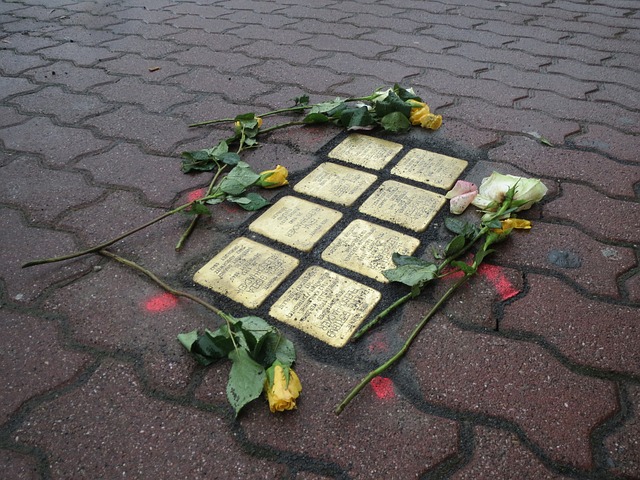
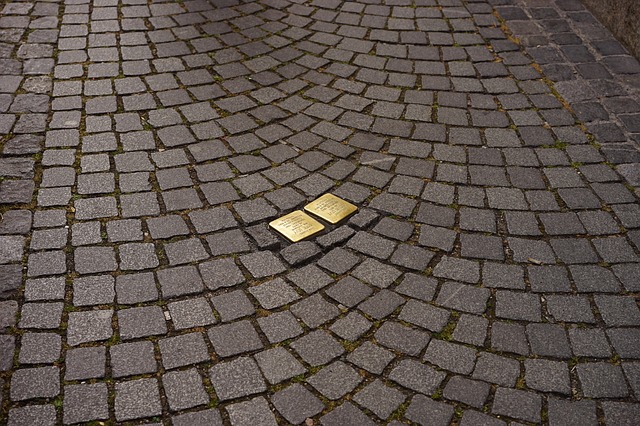

Comments:
Janet B:
A really interesting article, Constance. I shall look for the Stolpersteine next time I am in Germany.
Thank you!
Xiao Li:
Really meaningful presence of Art. Thank you for your writing.
Constanze:
@Xiao Li I agree! Thank you for reading, Xiao Li!